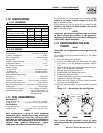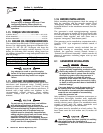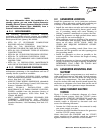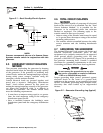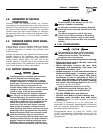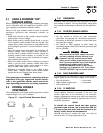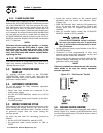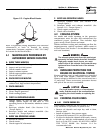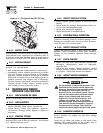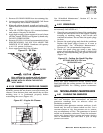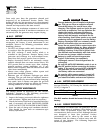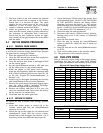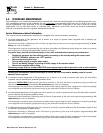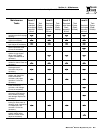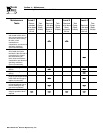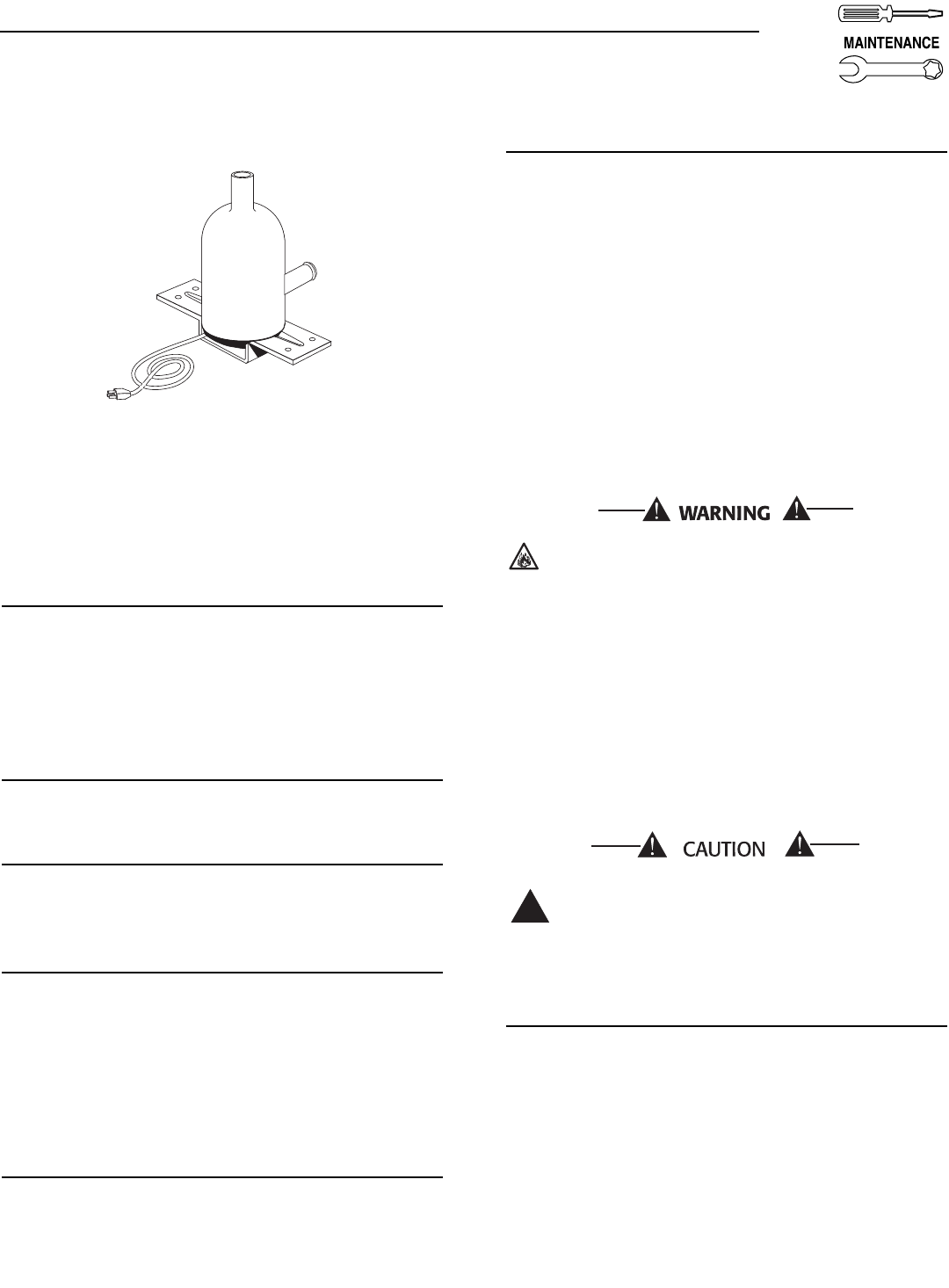
Generac
®
Power Systems, Inc. 15
Figure 3.3 - Engine Block Heater
Refer to applicable wiring diagram(s) and electrical
schematic(s) at back of manual for wiring
connections. Customer supplies a 120V 15A Utility
fed circuit for the block heater.
4.1 MAINTENANCE PERFORMED BY
AUTHORIZED SERVICE FACILITIES
A. EVERY THREE MONTHS
1. Check battery state of charge and condition.
2. Inspect and test fuel system.
3. Check transfer switch.
4. Inspect exhaust system.
5. Check engine ignition system.
6. Check fan belts.
B. ONCE EVERY SIX MONTHS
1. Test Engine Safety Devices (low oil pressure, low
coolant level, high coolant temperature).
C. ONCE ANNUALLY
1. Test engine governor; adjust or repair, if needed.
2. Clean, inspect generator.
3. Flush cooling system.
D. FIRST 100 OPERATING HOURS
1. Change engine oil and oil filter. (After initial
change, service engine oil and filter at 150
operating hours or six months, whichever comes
first.)
2. Retorque cylinder head. (See Section 1.13,
“Torque Specs”.)
3. Retorque intake and exhaust manifold. (See
Section 1.13, “Torque Specs”.)
E. EVERY 500 OPERATING HOURS
1. Service air cleaner.
2. Check starter.
3. Check engine DC alternator.
F. EVERY 800 OPERATING HOURS
1. Retorque cylinder head. (See Section 1.13,
“Torque Specs”.)
2. Retorque intake and exhaust manifold. (See
Section 1.13, “Torque Specs”.)
3. Check engine compression.
4. Check valve clearance.
4.2 COOLING SYSTEM
Air intake and outlet openings in the generator
compartment must be open and unobstructed for
continued proper operation. This includes high
grass, weeds, brush, leaves and snow.
Without sufficient cooling and ventilating air flow, the
engine/generator quickly overheats, which causes it
to shut down. (See Section 7 for installation diagram
and vent locations.)
The exhaust system parts from this product get
extremely hot and remains hot after shutdown.
High grass, weeds, brush, leaves, etc. must
remain clear of the exhaust. Such materials may
ignite and burn from the heat of the exhaust
system.
4.3 OVERLOAD PROTECTION FOR
ENGINE DC ELECTRICAL SYSTEM
Engine cranking, start up and running are controlled
by a solid state Engine Controller circuit board.
Battery voltage is delivered to that circuit board via a
15 amp fuse. These overcurrent protection devices
will open if the circuit is overloaded.
If a circuit breaker opens or a fuse element
melts, find the cause of the overload before
resetting the circuit breaker or replacing the
fuse.
4.4 CHECKING FLUID LEVELS
4.4.1 CHECK ENGINE OIL
Check engine crankcase oil level (Figure 4.1) at least
every 20 hours of operation, or prior to use.
• Remove oil dipstick and wipe dry with a clean,
lint-free cloth.
• Install oil dipstick, then remove again.
• Oil should be between FULL and ADD marks.
• If oil level is below the dipstick ADD mark, remove
oil fill cap. Add the recommended oil to bring oil
level up to the FULL mark. DO NOT FILL ABOVE
THE “FULL” MARK. See Section 1.14 for
recommended oils.
!
Section 4 — Maintenance
Centurion Liquid-cooled 15 kW and 25 kW Generators



